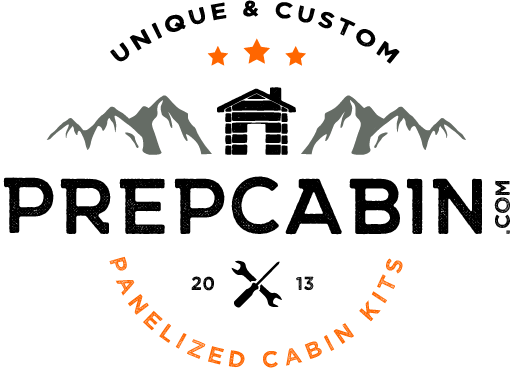Stocking up survival food is one of the most important preps you can do.
And the correct nutrition is essential to you and your family’s survival – and there are lots of opinions on what is the right way to supply that nutrition.
I strongly believe that survival comes first, and variety comes second. You can always find, make and develop luxury if you’re able to survive the initial disaster.
So it’s likely more important to store up simple life-sustaining survival superfoods than to focus on dietary variety.
I’m not saying that dietary variety is totally unimportant. There are many reasons why we need a variety in our diets. But there are many advantages to keeping your food supply simple.
How many calories do you need a day to survive? (Based on adult dietary needs)
Most of my research shows that consuming under 1,000 calories a day will lead to slow starvation. It’s reported that many in concentration camps in WWII were able to survive for years on a diet under 500 calories a day.
Most people can maintain their health with around 1200 to 1500 calories a day depending on level of activity. However, the average recommended calorie intake for the average adult is 2000 to 2500 calories, which increases depending on how active you are.
By preparing to supply your basic caloric needs you’ll have a better chance at survival. And focusing on calorie-rich, healthy survival superfoods as I call them should be your first focus when getting your food preps together.
Let’s look at these 4 reasons to keep it simple with survival superfoods.
1. Storage
Storing your survival food takes up space. And many of the preps to provide a large dietary variety will take up excess space.
Focusing on foods with a high density of nutrition that takes up little space will streamline your preps.
2. Difficulty
You may say that you’ll do whatever it takes no matter how difficult it is to survive. But the human condition doesn’t take well to excess tasks or higher levels of difficulty.
Are you putting off getting your food preps in order? If so you may unconsciously see the task as more difficult than it’s worth. Simplify your food preps with survival superfoods and you’ll find that getting prepared for a SHTF scenario is easier than you think.
3. Expense
Most prepared survival foods can be fairly expensive. Food is one of the biggest expenses the average American has. The average American spends about $151 dollars a week on food according to a recent Gallup poll.
Reasonably priced freeze-dried foods that provide a great variety are still more expensive than other survival foods. Even when buying in bulk one of the least expensive brands still costs $2 per meal.
If you’re trying to store enough to feed an entire family for 3-6 months or longer that adds up to a significant investment. Storing up that freeze-dried survival food for a family of four to last 6 months would cost over $4,000! For food you may never eat …
Please Note: Sam’s club offers deals on prepackaged emergency food at much better deals than many other places.
4. Time
If you spend a lot of time on food preps then you use up time you can use on other preps. Having food is important but there is a lot of knowledge and other preps that need to be addressed before SHTF as well.
By keeping your food preps simple with survival superfoods you’ll have more time for personal defense, medical, building, gardening, water and other crucial preps.
What are these survival superfoods?
I’ve been talking about stocking survival superfoods that are rich in calories and nutrition so I guess it’s about time we got into what some of those food items are. This isn’t a complete list of foods that are good for prepping but they’re some of my favorites.
Beans
You can’t really go wrong with beans. They provide fiber, carbs, and most importantly protein!
Just ½ cup of cooked pinto beans has 120 calories, 22 grams of carbs, 8 grams of fiber, and 8 grams of protein. Just 5 measly cups of cooked beans a day can sustain one average adult.
Plus beans store easily and for a long time whether dried or canned.
Auguson provides prepackaged 41 pound pails of pinto beans with a 30 year shelf life: Augason Farms Pinto Beans – 41# Pail 432 – 1/4 Cup Servings
Of course you can buy the beans cheaper in bulk bags and package them in food grade pails yourself. Just remember to get the proper oxygen remover packets and silica drying packets to keep moisture out of your survival beans.
Peanuts and Peanut Butter
These little nuts – which actually aren’t technically nuts – are a great survival superfood. With a long shelf life and a lot of nutrition it’s one of my staple survival foods.
Just one ounce of dry roasted peanuts contain 14.1 grams of fat, 6.1 grams of carbs, 2.3 grams of fiber, and 6.7 grams of protein.
You can usually find the large jars of peanut butter with upwards of a two-year expiration date. I’ve eaten plenty of expired peanut butter in college and survived so it likely lasts even longer. Just try to rotate out your stock and consume it preferably before it goes out of date.
You can even purchase peanut butter powder, which has been freeze-dried for longer storage. Here’s an example of what you should look for Peanut Butter Powder 44 Oz.
Note: Freeze-dried peanut butter doesn’t have the same nutritional value as peanuts and regular peanut butter.
Rice
I am in no way a big fan of rice. The brown rice has more nutrients than white rice. Either form of rice is basically just carbohydrates with a little fiber thrown in for good measure. Rice just isn’t something I enjoy eating … But if I’m hungry and want to survive I’ll sure eat it.
However millions upon millions of humans survive on diets consisting of primarily rice and whatever else they can scrounge from nature or scavenge from other’s left overs.
And only because of its long shelf life do I consider it a survival superfood, not a nutritional superfood. Many preppers have buckets of rice stacked up for their long-term food supply for good reason.
Salt
Having salt in your diet is extremely important to your health. Regardless of politicians thinking they should control your salt intake!
Salt helps your body regulate its digestive, muscle, and nervous systems among other biological benefits.
Plus salt doesn’t go bad, ever! Even if salt gets hard from moisture it won’t go bad and can be reground into perfectly useable salt.
It can also be used to cure and preserve meats and as a general seasoning for any food. It is said that salt in the ancient world at times was more valuable than gold and the term salary – as in pay – comes from workers being paid in salt!
Protein
Few food items are more important to humans than protein. Some of the foods listed above have protein but you should also stock up some canned meats. They can last upwards of five years. You can also can your own meats for your survival supply.
Hopefully you see the benefit to stocking up your survival superfoods before you focus on a large variety of different foods. Preserved fruits are nice but they don’t last as long and aren’t a crucial food item for survival.
So what survival superfoods do you plan on stocking for when SHTF? Or did I miss anything crucial? Let me know below …
Sources:
http://www.fns.usda.gov/fdd/facts/hhpfacts/New_HHPFacts/Beans/HHFS_BEANS_PINTO_DRY_A914_Final.pdf
http://gallup.com


